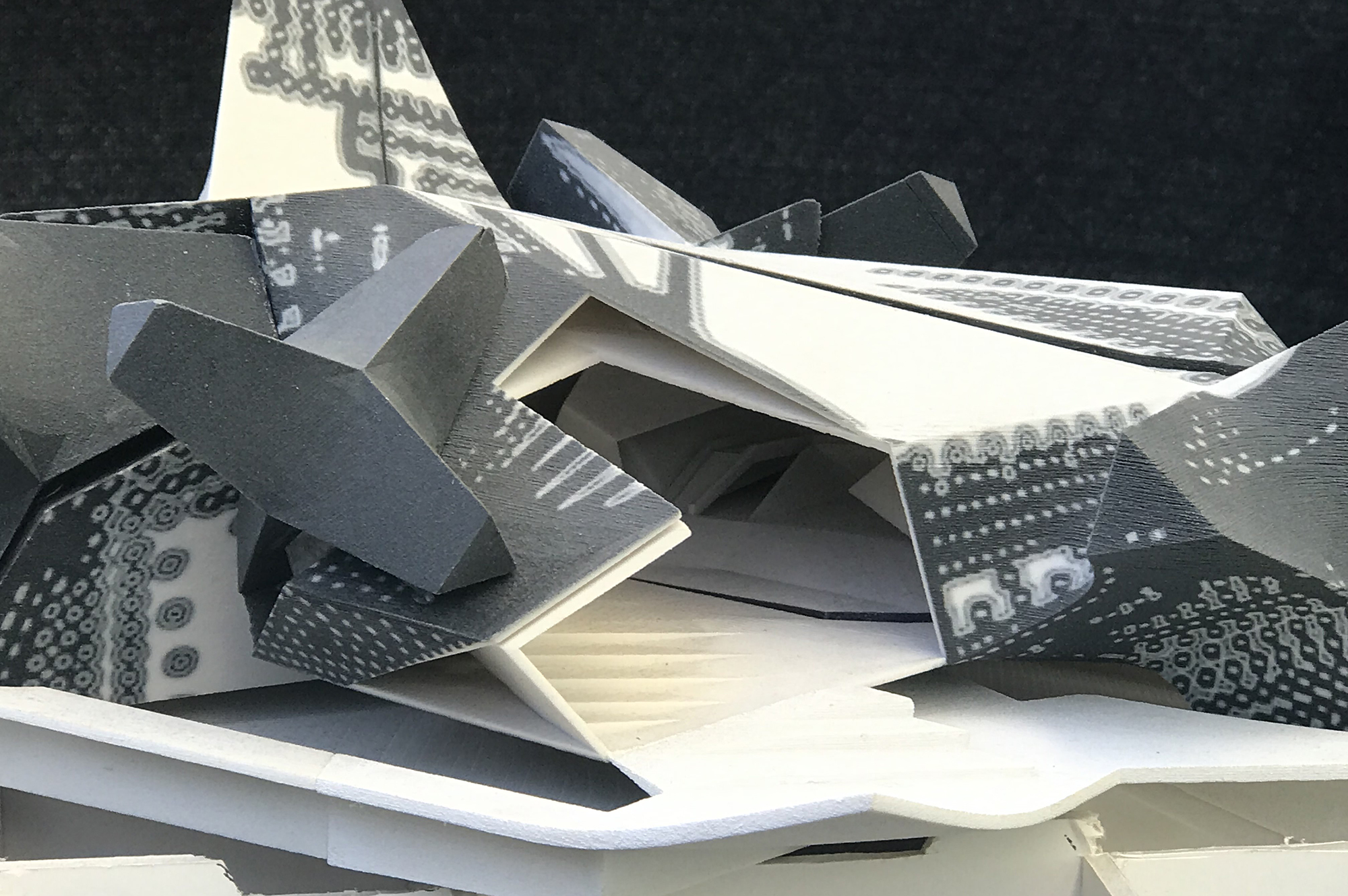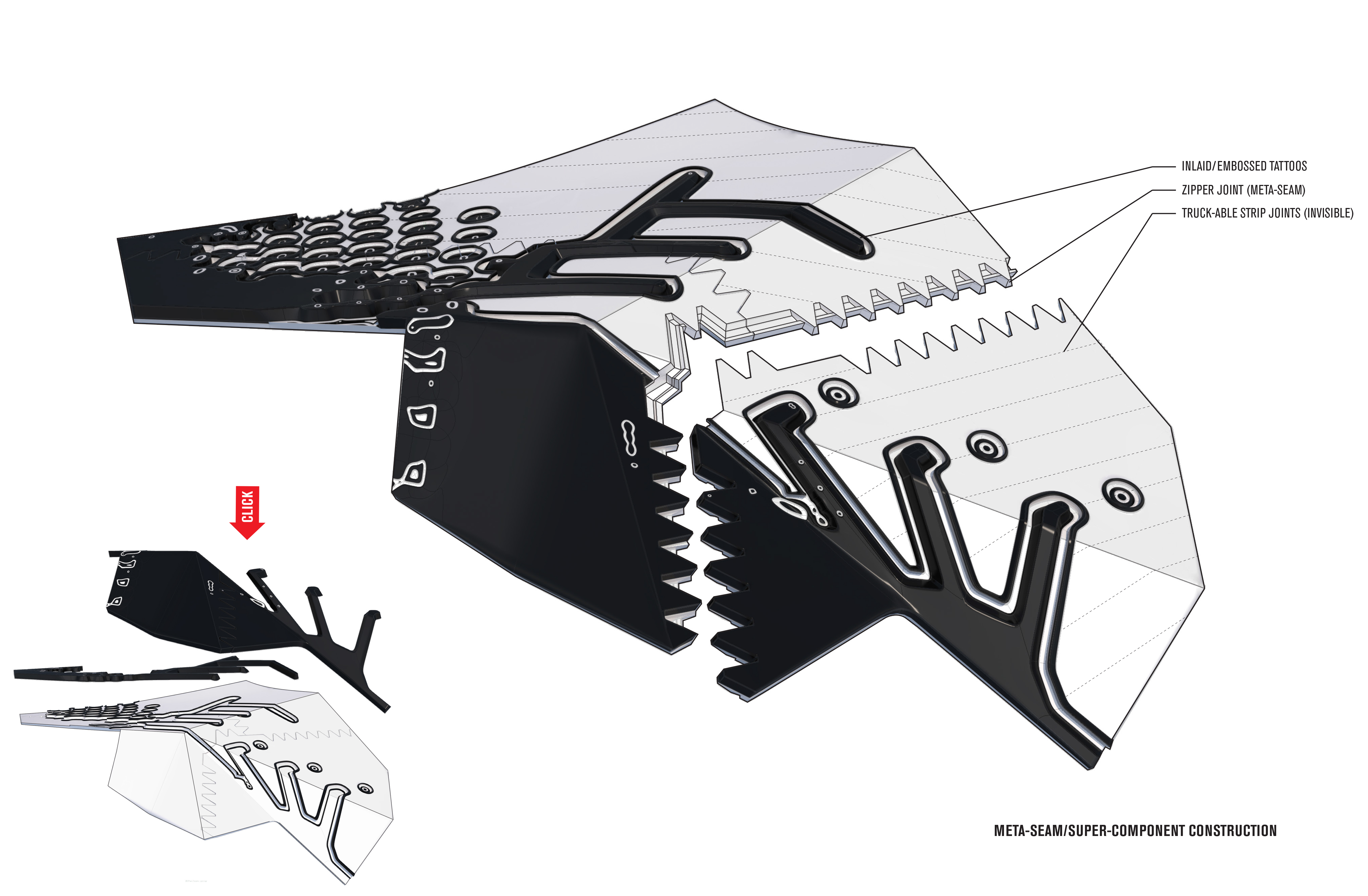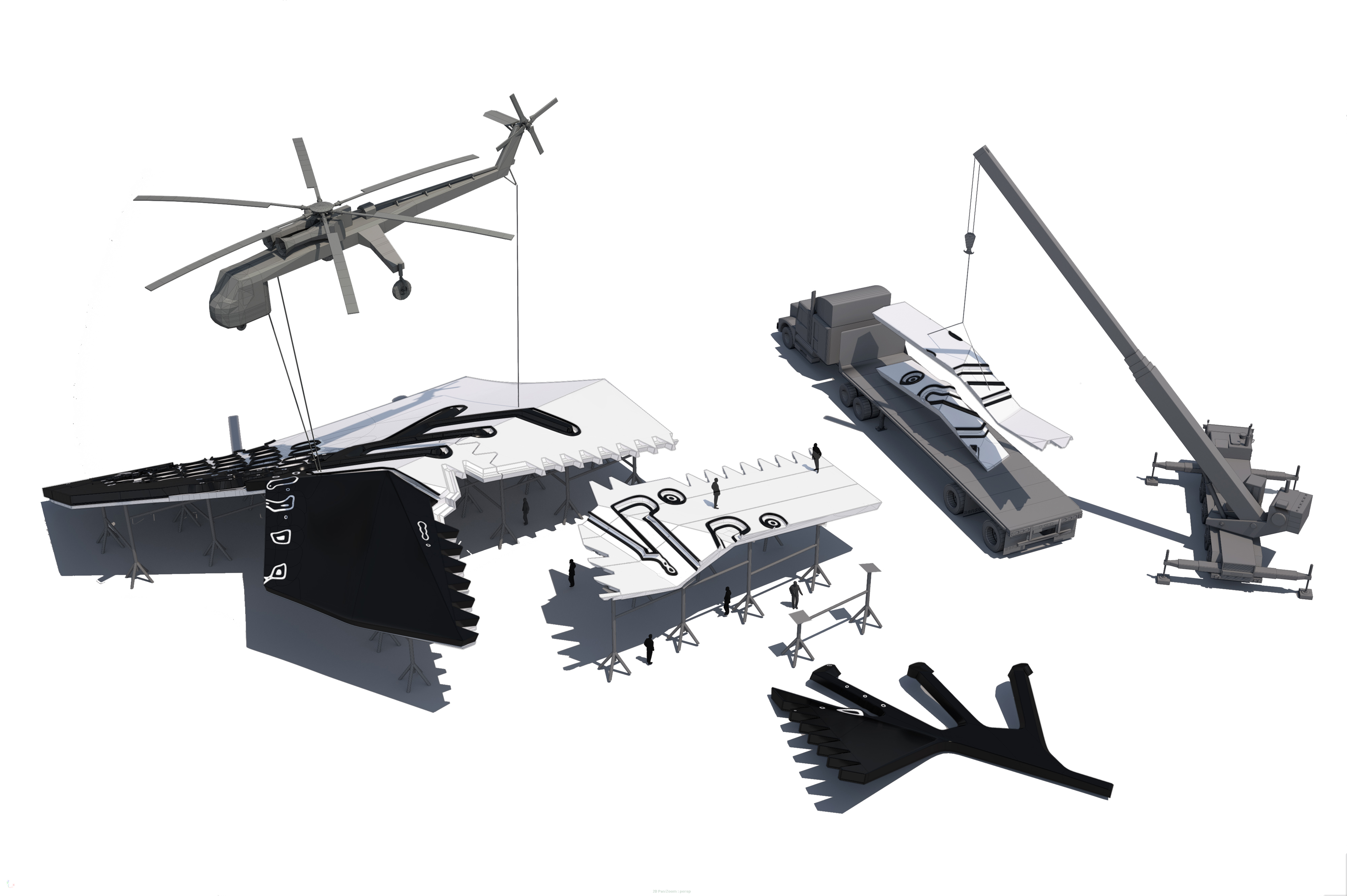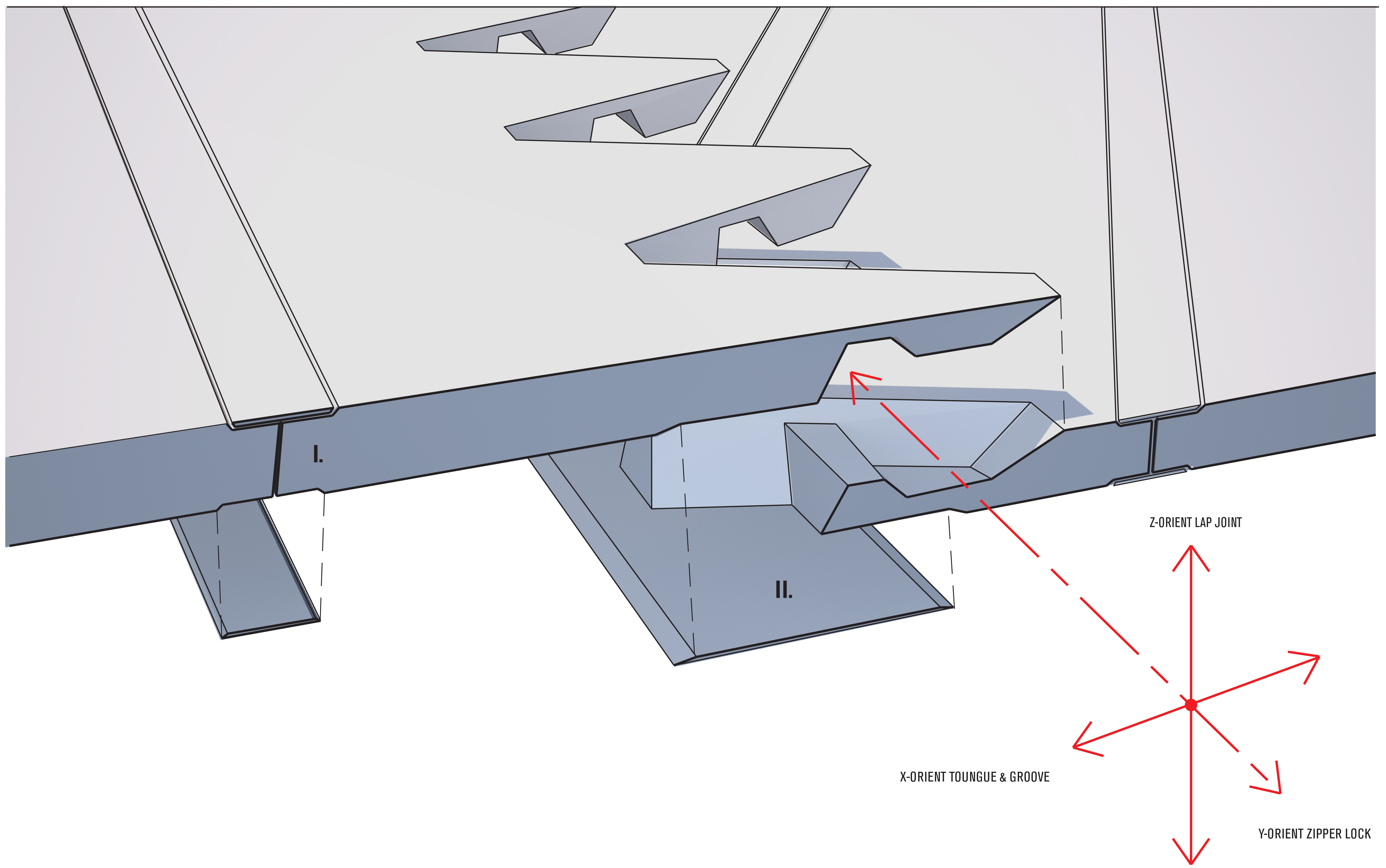
NATIONAL CENTER FOR CONTEMPORARY ARTS
This proposal for the Moscow Center for Contemporary Art is based on a set of giant black jacks in strange orientations, loosely gathered together in a container. This strategy creates complex interstitial spaces and deferred interiority, producing a museum full of surprises rather than an endless enfilade.
Read More
Strange Mereologies
The jacks are hard objects that press against their soft container from the inside and outside, inflecting it locally. A liner on the interior sometimes tracks with the container, and sometimes deviates radically from it. One large jack is set between container and liner, pressing into each, and then removed to create a vast interstitial space that serves as the temporary gallery. The remaining jacks house various support functions such as a research area, library, offices and theaters. At the main entry, the container is sliced open, momentarily revealing where the inner liner delaminates to create habitable poché space for galleries and circulation.
Tattoos and Scale Indeterminacy
Tattoos add ambiguity to the visual relation between jacks and container. Contra computational meshes that flow over masses smoothly and adaptively, tattoos are literally objects on objects: discrete entities embedded into surfaces rather than emerging from them.
Ground vs. Land
Landing is deferred as the building is pressed into an intermediary “ground object” which is set loosely on the land. This ground object is not extruded from the earth, like a plinth, but rather placed on it, like a saucer under a coffee cup. At its corners, it peels up to emphasize its separation. The advantages here are twofold: first, the ground is annexed as architecture, and second, the experience of entry is drawn out.
LOCATION
Moscow, Russia
TYPE
Museum
YEAR
2011
FLOOR AREA
46,500 SM
CLIENT
Ministry of Culture of the Russian Federation
DESIGN TEAM
PROJECT TEAM




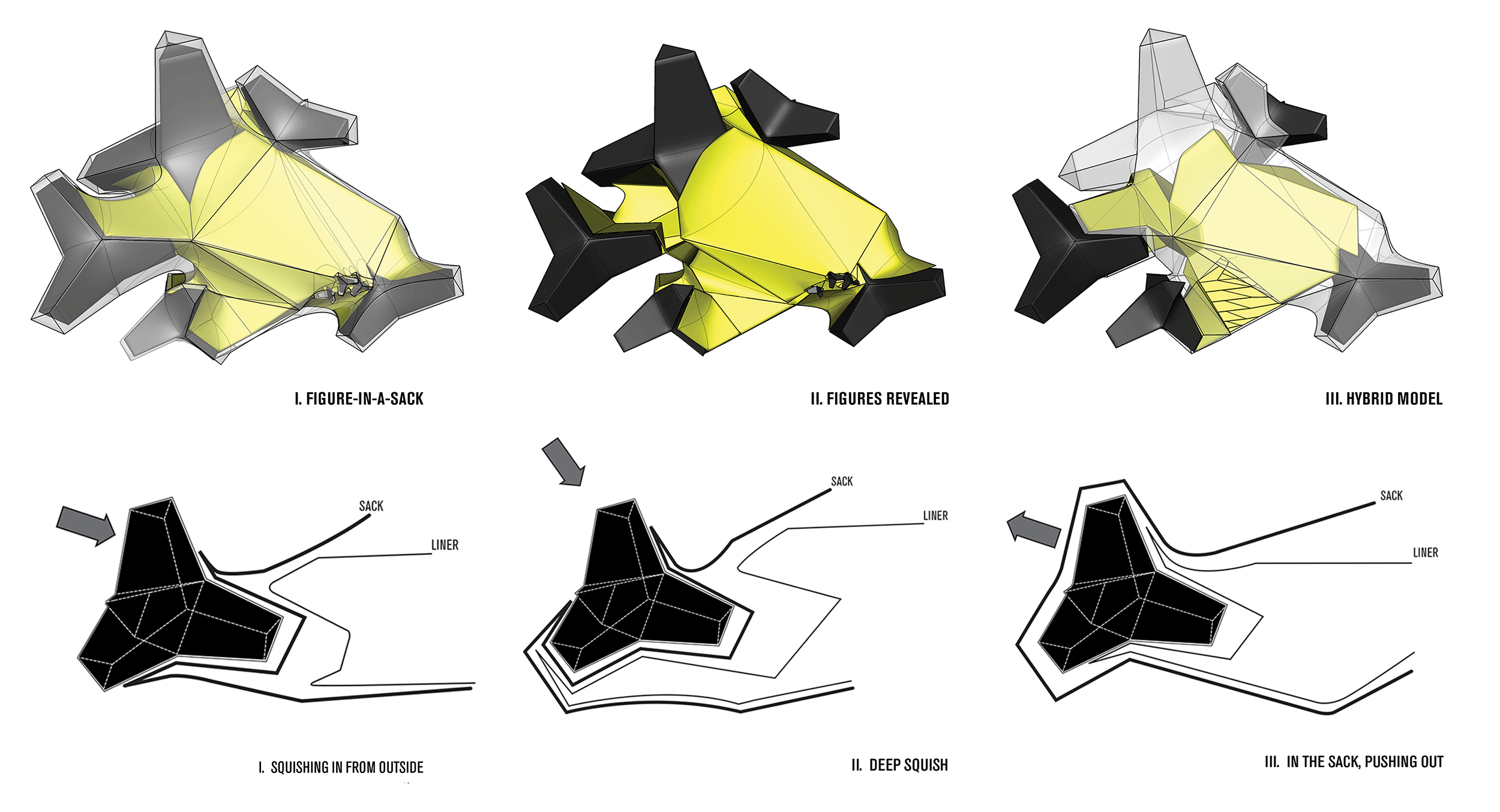
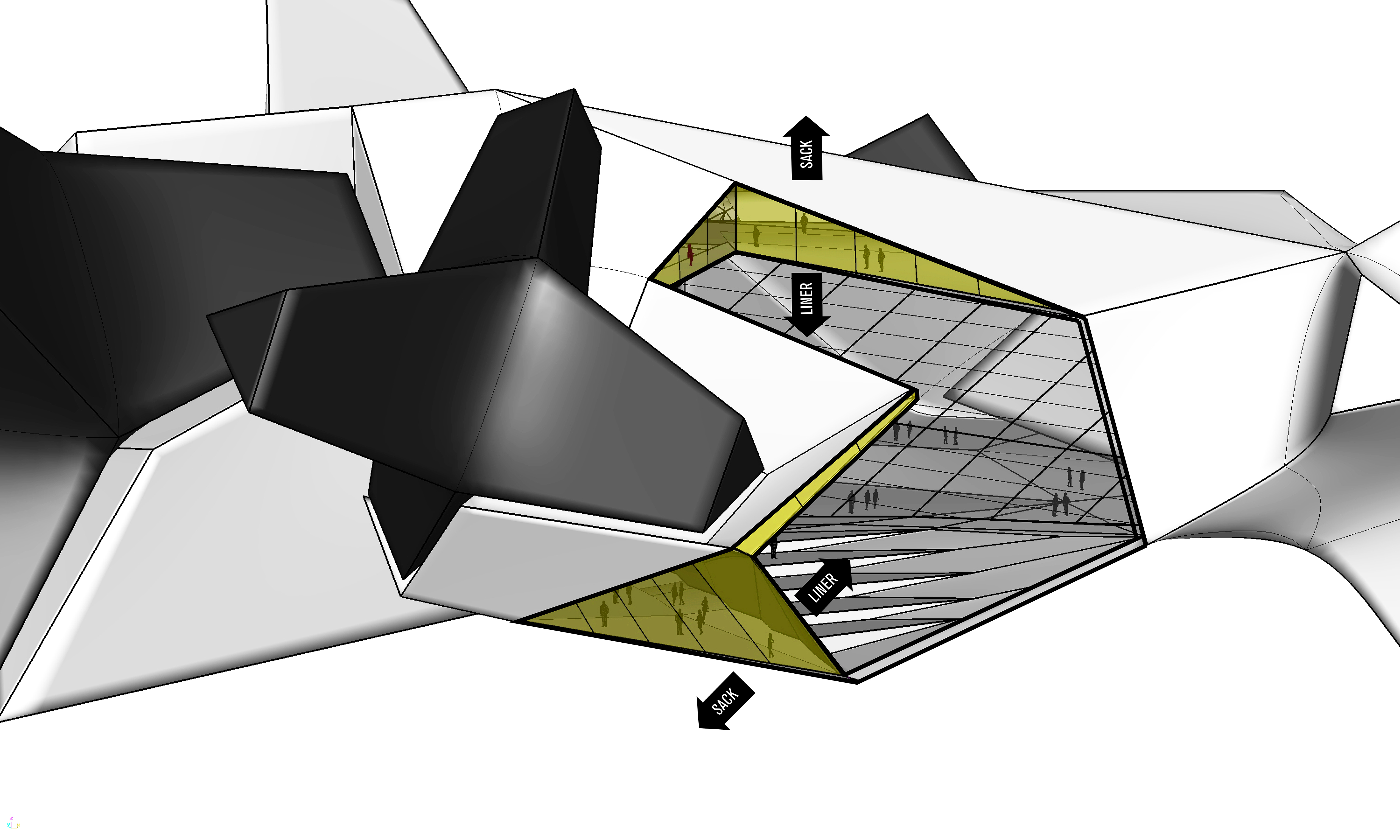

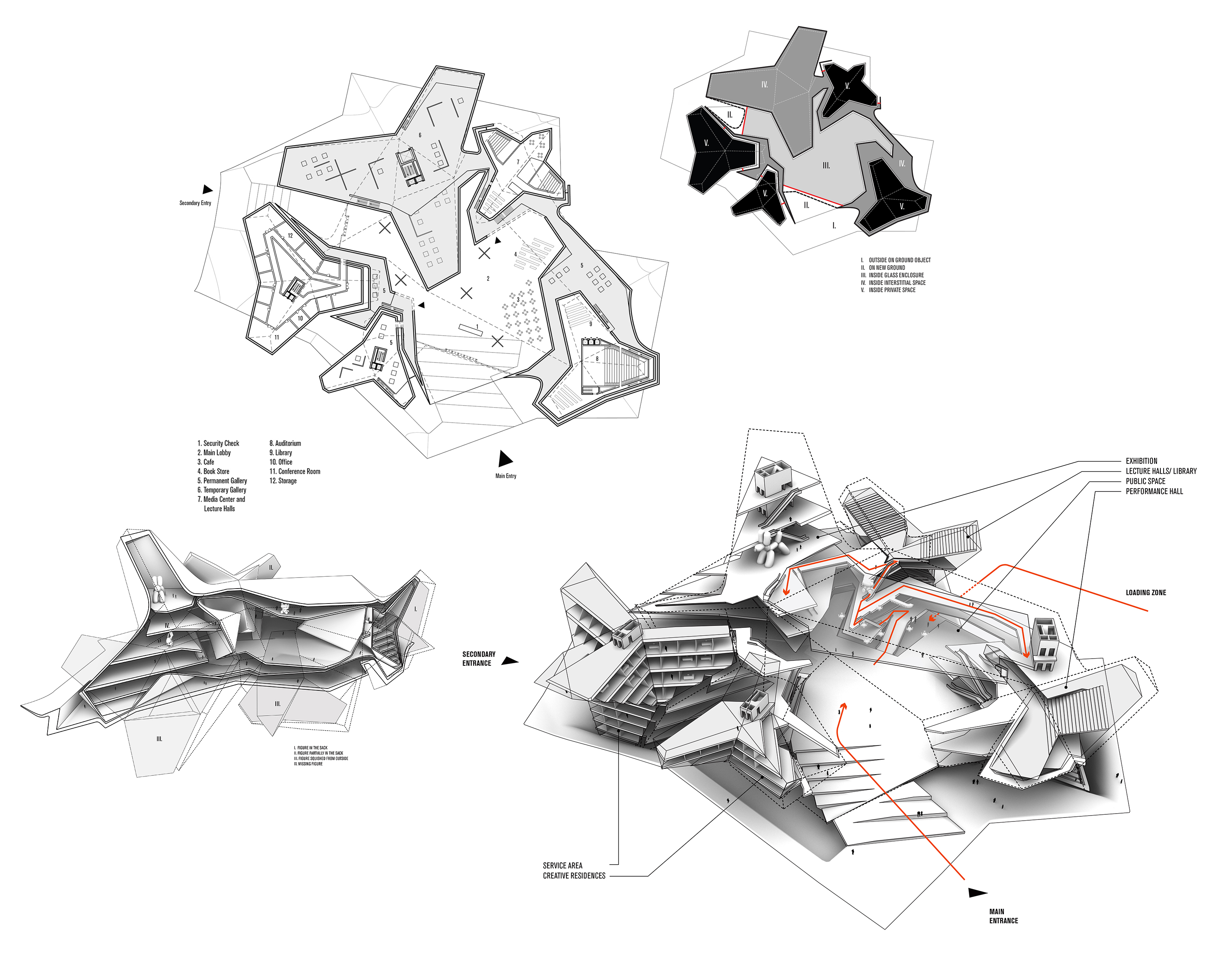


Tattoos add ambiguity to the visual relation between jacks and container. Contra computational meshes that flow over masses smoothly and adaptively, tattoos are treated as objects embedded into the skin.

